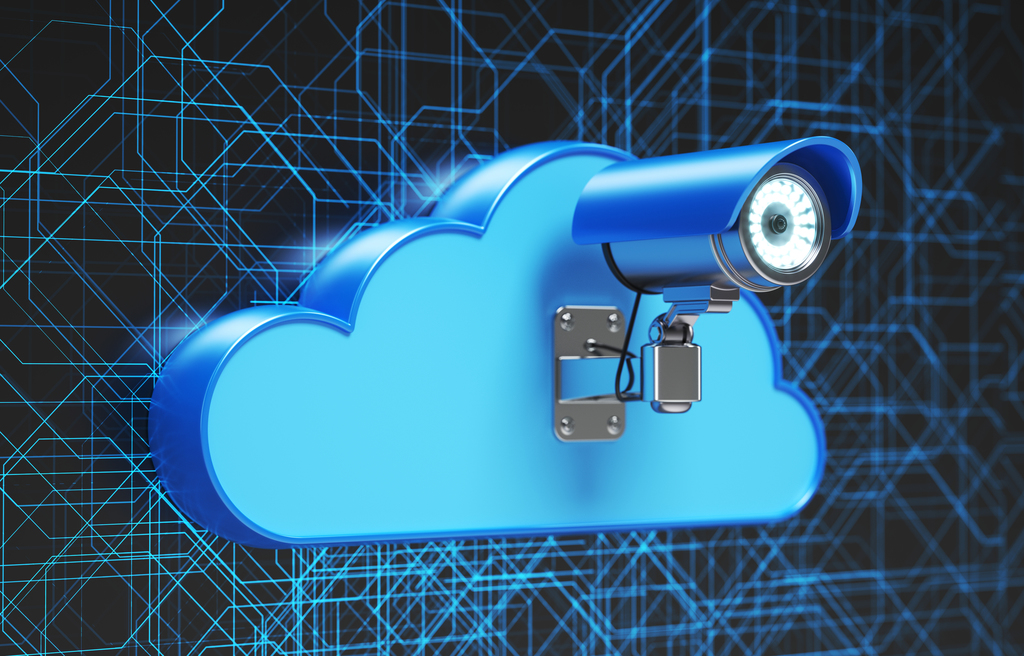
Brian Sims
Editor

Brian Sims
Editor
Evidence suggests that more and more organisations are now moving their surveillance systems into the cloud. With this ‘Cloud CCTV’ boom in mind, Frank Crouwel takes a closer look at why this is happening and offers some timely guidance for security professionals such that they can make sure cloud migration plans are adequately thought through ahead of implementation
Market research conducted late last year by NW Systems Group uncovered plans being made by many organisations to move their CCTV systems into the cloud. The most startling finding was the fact that 71% of private sector firms with 50 or more employees, and headquartered in England, are looking to transition their CCTV systems (ie video surveillance storage and management) into the cloud over the next 12 months.
There are at least four key reasons why so many CCTV system owners are considering that migration. First, the COVID-19 pandemic is stimulating an acceleration in the migration of all IT applications into the cloud, creating a ‘Remote Everything’ phenomenon as we like to call it. With so many of us now operating away from our normal workplaces, it makes sense that remote access to all essential systems is enabled. For many, this has naturally led towards a push to place more systems into the cloud.
Early adopter cloud-based system users recommend it over accessing on-premise systems remotely because of the ease of access and retrieval of data. Indeed, that often goes hand-in-hand with improved resilience, tighter cyber security and easier system management for IT-focused practitioners.
Second, the UK has finally passed through its ‘CCTV to Network Video’ tipping point such that 61% of all UK-installed surveillance systems are now residing on an IP network. As such, many more video surveillance management systems are that much easier to migrate into the cloud.
Third, it’s necessary to set cloud migration in the context of a wider drive to ‘servitise’ IT systems in order to accommodate those IT decision-makers and C-Suite executives who want to pay for all network-centric services based on usage levels. Rather like a utility, for example. ‘Servitisation’ fuels cloud migration as this is the preferred way of delivering IT services via affordable monthly subscriptions, while at the same time fashioning highly reliable IT services underpinned by near 100% uptime.
Finally, cloud migration supports a growing trend for security and risk managers to request access to video evidence wherever they may be. Why? Surveillance camera data is increasingly used to check site operations, as well as ensure the security of premises and the Health and Safety of workers.
Delivering new insights
Video data is attracting more remote managers as video analytics wizardry offers the capability to deliver new insights linked to the inner workings of a business. It’s part of that ‘Remote Everything’ phenomenon (more of which anon).
Our survey findings directly reflect what we’re witnessing on the ground. There’s strong demand for ‘Cloud CCTV’, as we call it, particularly among those businesses managing multiple sites. Logistics, construction and retail organisations serve as perfect examples.
The idea of not having to maintain a dedicated server with video management software licenses in the cramped back room of each and every premises being run is appealing. The hardware cost savings and ongoing management efficiencies alone are obvious when you multiply them by the number of sites operated. With ‘Cloud CCTV’, cameras can be connected directly to the Internet. No other equipment is needed. Users experience the systems remotely through standard web browsers and smart mobile apps just as they do many other cloud-based services.
It’s important to remember the Operational Requirements of your surveillance system. We often find ourselves recommending that clients review their Standard Operating Procedures and actual needs well before considering any move to the cloud. Failure to do so can reduce or eliminate anticipated savings from migrating the CCTV system or otherwise lead to inadequate functionality.
Managing video data isn’t as simple as typical data flowing through corporate computer networks. For a start, it requires much more bandwidth and storage resources. Large volumes of data are being accumulated quickly and much of it may never be accessed. Video data is 97% input (ie recording) and only 3% output (ie playback). Therefore, a thorough assessment is required, including basics such as video resolution and frame rates needed, plus retention requirements, anticipated playback use and speed of access.
Additionally, advanced tools such as video analytics should be considered as a means for capturing, transmitting and storing only the video data that’s deemed to be of genuine operational value.
What’s in storage?
Would-be migrators of CCTV systems to the cloud need to focus their attentions on the fact that Infrastructure-as-a-Service (IaaS) providers such as Amazon Web Services or Google Cloud charge on a monthly cycle based on how much data is being shifted into the cloud, for how long it’s kept there and how often some of that data’s being retrieved for whatever purpose.
When it comes to cloud, data is a key cost driver. That being so, security professionals must always look to ensure that they transfer, store and retrieve video data as efficiently as possible.
Similarly, Video Surveillance-as-a-Service (VSaaS) providers typically charge based on specific resolution and frame rate requirements and the length of time that the client wishes to keep hold of CCTV footage (ie data volumes).
One obvious area to address is video storage and retention policy. Many companies still adhere to traditional CCTV video retention times of 30 days. This target was really geared to the era of VHS tape-based video cassette recording in the 1980s and 1990s and daily tape rotation regimes for ease of management.
In today’s world, any recorded video evidence associated with any security incidents can be located pretty swiftly. In most businesses, there’s rarely an Operational Requirement to keep all recorded footage beyond seven days. Cloud migration offers a powerful stimulus to consign outdated data retention practices to the bin. In most cases, this can mean storing just 25% of the amount of CCTV data many are presently collecting.
This assessment of data transfer, storage and use is vital prior to making any decision to move CCTV into the cloud. Remember, cloud providers make money out of data volume and use. It’s not in their interests to warn you about that.
If your Operational Requirement truly demands a combination of high-resolution video, high frame rates and long retention times (ie a good deal of data accumulation) then a hybrid ‘on-premise, off-premise’ model may be more suitable if you’re presiding over a multi-site operation.
For single-site operations with very high video data storage and access requirements, cloud is unlikely to be a good option. Having said that, running the application in the cloud, but also keeping your video data on-premise, may be beneficial in some instances. This would be the case, for example, if there are many remotely-based managers who need quick, easy and secure access to the CCTV system.
Managing user expectations
Normally, when moving from hosting their own software to a cloud-based service, the end user will benefit from some feature and performance enhancements with enterprise IT systems. On that note, it’s fair to suggest that companies do tend to have similar expectations when moving their CCTV into the cloud.
However, because of the huge amount of video data involved with CCTV, some features and levels of performance might actually suffer. It’s important for companies to gain a true understanding of the advantages and disadvantages of ‘Cloud CCTV’ versus on-premise video management before making the leap. There will be some advantages for end users. However, just as surely there will be several disadvantages as well. These need to be properly assessed with a view towards determining whether or not they’re deal-breakers.
Also, it’s worth bearing in mind that, until very recently, most video analytics functionality could only be managed on-premise and on high CPU servers due to the sheer amount of processing power required to analyse the video data.
For example, only with Axis Communications’ seventh generation chipset ARTPEC-7 launched just one-and-a-half years ago did it become possible for higher-end Axis network cameras to perform CPU-hungry video analytics capabilities in the camera itself.
Only basic video analytics capabilities are currently available from VSaaS providers. If you’re looking to use more advanced video analytics available on the edge, then moving your video management system (such as Milestone) into Amazon Web Services or Google Cloud would be a more suitable option.
If you’re migrating your CCTV system into the cloud, be prepared to compromise on some features when you’re doing your planning work. Certainly, if advanced video analytics is a significant or essential part of your system, it follows that cloud is probably not the best option for implementation and ongoing system management.
IaaS versus VSaaS
As stated, when considering any move of CCTV to the cloud, today’s security practitioners have two options open to them. They can either migrate their existing VMS into the cloud using an IaaS provider such as Azure or move to a VSaaS provider offering a ready-made cloud platform.
Running your existing VMS in an IaaS environment will give you all the features and functionality that the same software would deliver if installed on-premise. An open platform ecosystem, such as that provided by Milestone, will continue to benefit from the many integrations and advancements in existence.
Moving to a VSaaS provider such as Morphean means that you’ll be restricted to the features and functionality available within its platform. However, all the basics and more tend to be covered and, for most businesses, this will be enough. Third party or true ecosystem integrations don’t really exist for VSaaS platforms as yet. From our perspective, we don’t anticipate that status quo changing at any point in the near future.
It’s worth looking at the growing trend for ‘Remote Everything’. When we started NW Security Group back in 2004, with IP video technology at its heart, we had a vision to not only deliver relevant video data to the right people at the right time, but also to use this technology for significantly reducing unnecessary travel, thereby saving time and money and, importantly, reducing environmental impact.
Until now, at least, our ‘Remote Everything’ vision was only slowly and partially realised. However, the ongoing COVID-19 pandemic is making ‘Remote Everything’ more inevitable. Working from home or away from the workplace and less business travel has become commonplace. Many predict this phenomenon is here to stay even after COVID-19 recedes. The need to travel for business has become scrutinised at many levels. We’re all finding new ways (and remote online tools) to transact our work without leaving our homes.
Our vision of reducing travel by using IP technology smartly is finally receiving the major boost it needed. The market is not only ready for ‘Remote Everything’, but actively needs it in order to keep the wheels of commerce turning.
Frank Crouwel is Managing Director of NW Security Group (www.nwsystemsgroup.com)


